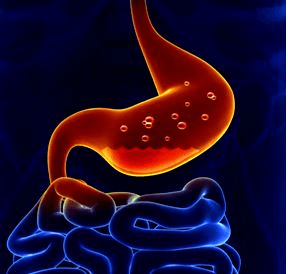SEROPOSITIVITY OF HELICOBACTER PYLORI AND ASSOCIATED RISK FACTORS AMONG DYSPEPETIC PATIENTS
Keywords:
Al-Mukalla city, Dyspepsia, Hadhramout, Helicobacter pylori, Seropositivity, YemenAbstract
Background and Objectives: The prevalence of Helicobacter pylori infection is most common worldwide, and the seroprevalence of H. pylori infection varies greatly among societies and geographical locations. This study aimed to determine the seroprevalence of H. pylori infection among dyspepsia patients in Al-Mukalla city– Hadhramout/Yemen.
Methods: A cross-sectional study was conducted among 100 suspected patients with dyspeptic disorders where the anti- H. pylori antibodies was detected using the H. pylori antibody test cassette rapid immune chromatographic assay. Also, a structured questionnaire was completed for each patient to collect socio-demographic data, personal hygienic status and some clinical signs.
Results: The prevalence of serological positivity for H. pylori infection was 37% with a statistically significant value (P=0.000). A high prevalence of H. pylori infection was detected among male more than females. The age group 5–18 years followed by age groups 33–46 years and 47–60 years showed the highest prevalence of H. pylori infection. There was no significant association between H. pylori infection with social, demographic, behavioral, and health variables (P>0.05). Clinical signs of heartburn and regurgitation were found to be significant associated with H. pylori infection (P=0.014).
Conclusions: Helicobacter pylori infection was found to be associated with dyspepsia. Heartburn and regurgitation have been found as clinical symptoms associated with H. pylori infection.

Peer Review History:
Received 4 June 2020; Revised 7 July; Accepted 20 August; Available online 15 September 2020
Academic Editor: Dr. Asia Selman Abdullah , Al-Razi university, Department of Pharmacy, Yemen, asia_abdullah65@yahoo.com
, Al-Razi university, Department of Pharmacy, Yemen, asia_abdullah65@yahoo.com
Reviewer(s) detail:
Prof. Dr. Hassan A.H. Al-Shamahy , Sana'a University, Yemen, shmahe@yemen.net.ye
, Sana'a University, Yemen, shmahe@yemen.net.ye
Dr. Tanveer Ahmed Khan , Hajvery University, Lahore, Pakistan, tanveerahmedkhan754@gmail.com
, Hajvery University, Lahore, Pakistan, tanveerahmedkhan754@gmail.com
Downloads

Published
How to Cite
Issue
Section

This work is licensed under a Creative Commons Attribution-NonCommercial 4.0 International License.









 .
.